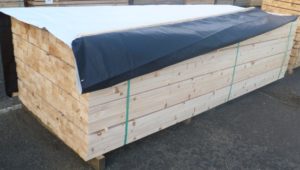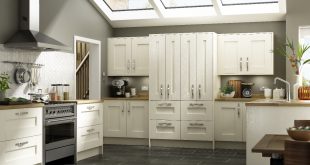In the present uncertain times, it seems only sensible for merchants to protect their investment in timber and wood products by making sure they are stored in good condition until business perks up again.
The key points are to:
- Keep it dry
- Keep it clean
- Keep it flat
- Avoid outdoor storage if at all possible. If it absolutely isn’t possible, make sure that the timber is very well wrapped and protected from the elements.
- Use good bearers, enough of them, and make sure they’re all in alignment
One of the staples of the building trade, softwoods need as much care as any other product group.“The key is to protect your valuable investment in stock,”says David Chapman, Sales & Marketing Director at BSW Timber.

“When timber is unloaded, if it’s coming inside the shed, take off the pack wrapping to allow the timber to breathe. If the pack is being stored outside, leave the wrapping on to protect it from rain, sun and wind. When a pack is opened, you still need to protect it,
“We recommend stapling a tile batten across the front face along the length of the pack to weight the wrap down and help keep it in place. Also when packs are opened, regularly remake the stacks: straightened packs will retain shape better.”
Jason Dodd, Sales Manager at Setra Wood Products UK, adds: “For internal-use softwoods, standard practice applies as much now as at any time, namely storing materials in a dry, airy environment which is not exposed to extremes of heat. Different merchants have their favoured methods of storing skirtings, architraves and other mouldings, whether that’s in pigeonhole racks or in A-frames: both methods are designed to keep timber as stable as possible. However both methods still require good stock rotation, for example putting older stock towards the front and newer stock behind.”
Dry and well-ventilated conditions are also best for storing MDF mouldings, as Simon Fleet, Group Commercial Director of W.Howard Group, points out: “W.Howard’s Polyco Wrapped MDF Profiles are robust and durable, but during these challenging times we know that stock may be in storage for longer than normal, as builders’ merchants sales reduce and some distributors have made the decision to close completely. During these times, we recommend that our Wrapped MDF Profiles are stored in dry, well-ventilated conditions to reduce the risk of absorbing moisture,” he says.
“The profiles should be stacked on a minimum of four bearers, and any protective wrapping should be left in place until the time of use. Particular care must be taken when stacking the product face to face, and during transportation, as even slight friction or sliding can cause damage to the decorative surface. This is especially important when handling and storing fully finished items,” he concludes.
Added-value products such as engineered timber flooring are an asset worth extra care, says Rob Eckersley, Director at The Solid Wood Flooring Company: “Wood flooring must be stored flat to avoid bowing. Never stand packs or boards on their ends. Wood flooring needs to be stored in an environment that has a relative humidity of between 35-65% with a consistent temperature. Keep wood flooring away from any moisture-rich sources such as insufficiently protected sheds or containers, and advise customers to store flooring away from garages and away from wet plaster, if work at a site is on-going.”
STACKING SHEETS CORRECTLY
In terms of stacking sheet materials, packs should, where possible, stay strapped with the packaging undamaged. Panels should be stored horizontally and lifted clear of the floor using dry bearers as supports. Bearers should be of equal thickness and placed at not more than 800mm centres for boards of 15mm thickness and upwards, using a minimum of three bearers. Closer spacing of the bearers is required for thinner boards.
Medite advises that the bearers supporting successive layers should be in vertical alignment and stacks of panels should have flush sides to minimise damage to protruding edges or overhanging corners. The storage area for sheet materials should be dry and well ventilated and an average relative humidity of 65-70% will maintain board moisture content in the range 8-10%. If extreme damp or moist storage conditions are expected, stacked boards should be covered by plastic sheeting. One or two scrap boards should be placed on top of stacked panels to reduce the effect of short-term changes in environmental conditions and to protect from damage.
SPECIALIST OUTDOOR PRODUCTS
These days merchants add value to their local offering by stocking a range of different outdoor products, from fencing to roofing battens (tilings or slatings), and sleepers. Laura Qualters, National Technical Manager at Marley Ltd, says that roofing battens need protection but in particular they need to be well–lathed (supported) to prevent sagging and aid ventilation. Anti-slip decking should be stacked face to face (grit to grit) and then lathed on alternate rows.
 Builders Merchants Journal – BMJ Publishing to Builders Merchants and the UK merchanting industry for more than 95 years
Builders Merchants Journal – BMJ Publishing to Builders Merchants and the UK merchanting industry for more than 95 years



